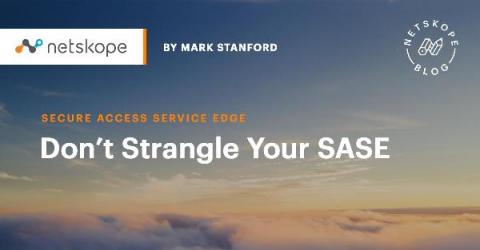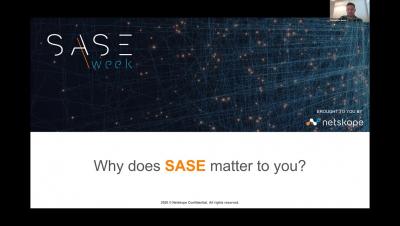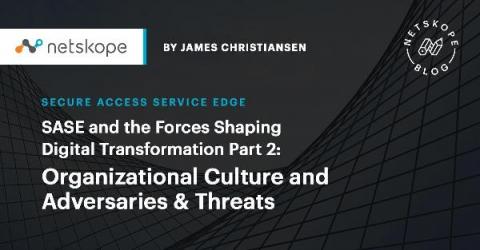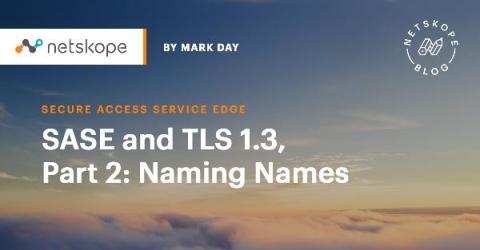Security | Threat Detection | Cyberattacks | DevSecOps | Compliance
SASE
Don't Strangle Your SASE
After dealing with the COVID global pandemic for the past year, it should be no surprise to anyone that working from home can be challenging. These various challenges include distractions, demands, lack of equipment (home wireless was never meant to be loaded the way it is now), and of course: bandwidth challenges.
A beginner's guide to SASE
If you are in the security or networking industry, there is no doubt that you’ve been hearing the latest Gartner inspired buzz word being dropped in conversations with your colleagues, customers, and vendors alike. In case you haven’t already guessed, I am referring to SASE (pronounced “sassy”).
What is Secure Access Service Edge? SASE Explained
The ongoing trends we’re seeing today show no signs of letting up. Workloads moving to the cloud, an escalating number of devices accessing applications and data, and the more distributed nature of the workforce have been accelerated by last year’s global health events.
SASE 101 for Security Practitioners
Helpful Answers to Your SASE-est Questions
If you joined us for Netskope’s SASE Week, you’ll know that we covered quite a bit of ground with our talks and programming. For a relatively new concept, there’s still so much potential to explore and discuss that we could probably talk about it for much longer than just a week. Netskope customers, large and small, are seeing the cost and business benefits of moving to a cloud-native control point, with the security posture and risk management tools they need.
SASE and the Forces Shaping Digital Transformation Part 3: Government and Industry Regulations, and Global Social and Economic Forces
Regulatory authorities are still trying to catch up with cloud computing let alone the revolution that business digitalization is causing as there is no longer a data center to audit or a firewall log to review.
SASE and the Forces Shaping Digital Transformation Part 2: Organizational Culture & Adversaries and Threats
At the convergence of digital transformation, an industry-wide focus on SASE, and the effects of the continuing COVID-19 pandemic, there are key forces that security practitioners need to be aware of and operate within. This is the second blog in a series of three detailing these forces and how security leaders and practitioners can adapt to them in a digitally transforming, SASE-enabled world. This blog covers the forces of Organizational Culture and Adversaries and Threats.
SASE and the Forces Shaping Digital Transformation Part 1: Businesses Strategy and Information Technology Ops
At the convergence of digital transformation, an industry-wide focus on SASE, and the effects of the continuing COVID-19 pandemic, there are key forces that security practitioners need to be aware of and operate within. This is the first blog in a series of three detailing these forces and how security leaders and practitioners can adapt to them in a digitally transforming, SASE-enabled world. This blog covers the forces of Business Strategy and Information Technology Operations.
SASE and TLS 1.3, Part 2: Naming Names
Recall from Part One that we identified three different places in a SASE product where TLS 1.3 support is relevant. In descending order of importance, those places are: proxy, tunnel, and management interface.










